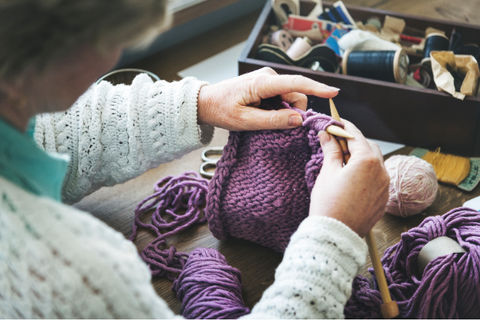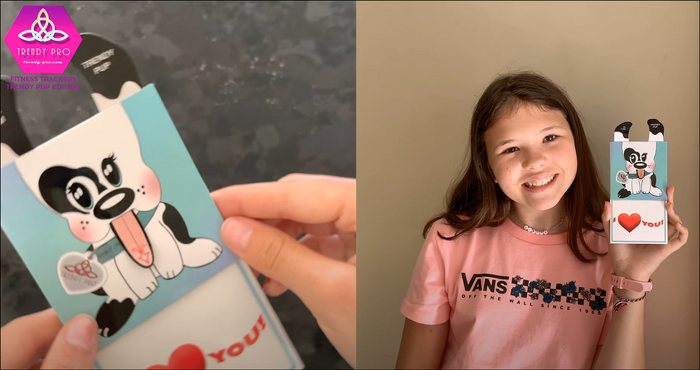Crochet is good for your health! Learning crafts like crochet can do more than you think for your mental well-being and happiness.

Arts and crafts are more than just a fun pastime, they’re truly healing and restorative and are actually very therapeutic. In fact, the healing benefits of crocheting (and knitting) are numerous.
These health benefits of learning a new craft like crochet range from simply calming you down and easing your stress to potentially relieving depression and reducing the risk of Alzheimer’s disease. Learn our favorite 7 Surprising Health Benefits of Crocheting with this page of insights.
Crocheting doesn’t just help you if you’re the one who’s sick – it helps the caregivers around you, your friends and family that help you, love you and support you. It’s also a very good craft to pick up as a hobby for group therapy sessions, as you’re healing together in a group without having the focus completely on you.
There are so many benefits of crochet, so whether you’re stressed out and can’t sleep or are doing your part to help slow down Alzheimer’s, you’ll be doing yourself and your health a favor.

By focusing on something that’s easy, repetitive and soothing, like crochet projects, you can calm down your mind and body enough to let you fall asleep. So the next time you’re tossing and turning in the middle of the night, don’t get frustrated, just pick up a work in progress!

When you’re feeling stressed or anxious in your daily life, take some time for yourself, pick up some yarn and your hook (or your needles), and spend some time being creative.
By crocheting and allowing yourself to be creative, you’re taking your mind off of whatever’s been nagging you. By focusing on the repetitive motions of individual stitches and counting rows, your mind is able to be more relaxed and free from anxious ideas and thoughts.

When you do something we like, our brains release dopamine, a chemical that affects our emotions and functions like a natural anti-depressant. Scientists now believe that crafts, such as crocheting, can help stimulate that dopamine release to allow us to feel happier and better about ourselves.

Crocheting can reduce the risk of Alzheimer’s by 30-50%. By engaging in cognitive exercises and stimulating your mind, you can slow down or even prevent memory loss. Whether you plan on challenging your memory by learning a new stitch or technique or simply by reading and working up a pattern, by getting a little crafty, you’ll be helping preserve your memories.


We all want to feel productive and useful, and by working up a project to give as a gift or sell at a craft fair, we can do just that. Though we don’t craft just for the compliments, a little bit of external validation by someone buying your finished item or your gift recipient wearing that crochet hat you made all winter long can truly give us the self-esteem boosts we need.

For those who seek therapy benefits in group settings, crocheting can be supremely beneficial. By placing the focus off of the patient and only the crochet project itself, it provides all of the previously mentioned health benefits of crocheting plus a sense of community and togetherness.
By working in a craft, those in a group can immediately have some way of relating to the other group members, and it may help function as an ice breaker for more serious conversations. Even if you aren’t actively seeking therapy, you can benefit from the sense of community that crocheting can bring.

Whether you feel helpless as a caregiver watching someone struggle or you’re the one struggling with your own illness or problems, crocheting is a way to put the control back into your own hands – literally. By choosing to craft, you are in full control of everything, from the type of project you’ll be making, the color and type of yarn and even the type of crochet hooks to work with, and that makes a difference in feeling like you have a say again.
Reference: Julia Wiatr, Editor, AllFreeCrochet.com

















